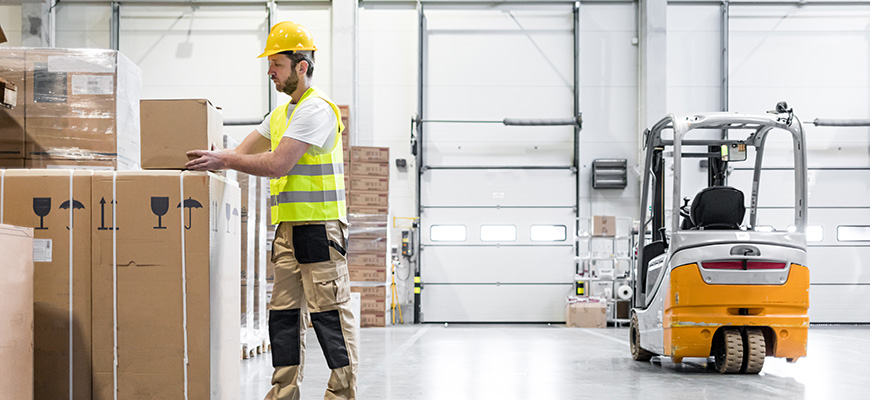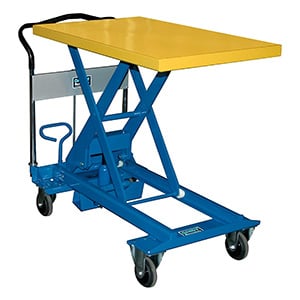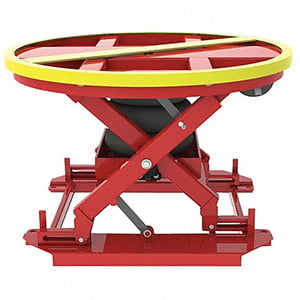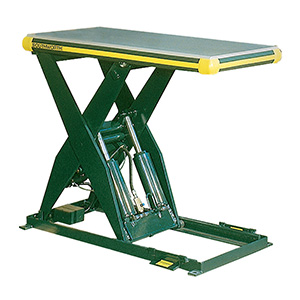
Creating your own Rocket Industrial personal account has many benefits:

Lift tables are simple but extremely efficient and versatile devices. They can be used in a variety of warehouse scenarios to help accomplish many different objectives.
Lift tables come in a variety of configurations, but the basic function of every type is to lift a load or object to make it easier to work with and transport. Common applications include heavy object loading, pallet/load handling, work positioning, and machine feeding.
To choose the right lift table for you, you’ll need to determine the lift’s intended purpose, the maximum weight capacity required, the size of the objects being lifted, how high the objects need to be lifted, and if there are any additional special considerations.
1. Enhanced Ergonomics & Safety
Lift tables help to alleviate the risk of injury and minimize workers’ fatigue. These ergonomic devices eliminate the need to bend or stretch and greatly reduce back strain from moving and lifting heavy objects.
2. Increased Process Speeds
Another benefit of having a lift table in a warehouse is how it helps to speed up production and transport. Whether you’re using the lift for production assembly, lifting a heavy product to service, or lifting a load of products to pack, a lift table will speed up these processes.
3. Long Lasting
Although the initial cost of purchasing a lift table may seem high, the increase in processing speeds and elimination of injuries due to strain can outweigh the cost. These devices are extremely durable, often lasting 20+ years before needing to be replaced. It’s important to make sure the lift you purchase is configured to handle the requirements of the application.
Lift tables are extremely versatile and are used for a wide variety of applications. They are available with multiple lifting mechanisms and come in a range of configurations, extension heights, sizes, and capacities.
Manual Lift Tables
Manual lift tables rely on the operator to simulate the lifting via a crank or pump. These types of tables are typically inexpensive, less than $1,000, and for light-duty lifts.



Pneumatic Lift Tables
Pneumatic lift tables are powered by air using heavy-duty airbags. They require little maintenance compared to other lift table styles and can handle loads up to 4,000 pounds. The average cost usually varies from $4,000 - $6,000.



Hydraulic Lift Tables
Electric hydraulic lifts use pressurized hydraulic fluids to power an actuator to raise the table. An electric pump is also required. These tables can have load capacities from 2,000 pounds, all the way up to over 20,000 pounds. The price heavily depends on the size and capacity of the lift table you need.



Scissor Lift Tables - The single scissor is the most common style of lift table and can be used in almost any application and industry. These tables come in a broad range of sizes.
Turntables - The addition of a manual or automatic turntable to a lift table allows workers to easily rotate the load. Automatic turntables can be programmed to auto-stop at certain intervals.
Tilts - A tilt is used to lift goods at an angle. This makes it easier to roll objects off the lift table or tip an object you are working on for better access.
Caster Frames - A caster frame is helpful if you plan to move a lift table regularly making it easy to push the table from one location in the warehouse to another.
If you have any questions about lift tables or need help selecting the right model for your needs, contact our equipment specialists and we will find the right lift for your warehouse applications.